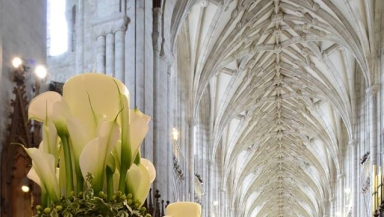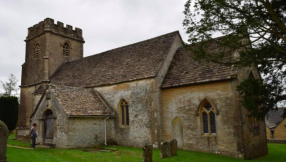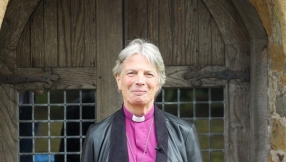
Cathedrals were built to demonstrate the glory, power and might of God. Towering above the skyline of cities across the country, there are 42 of the iconic buildings in England alone.
They offer excellence in worship in a traditional Christian setting, and are an essential part of British religious history. However, many cathedrals are under threat as they receive no direct government funding and the cost of upkeep, repairs and maintenance is climbing - they cost an estimated £3 per minute to fund.
"To run an organisation on this scale, in a building as old as ours, is costly. People need to be able to hear, to be warm and to have good lighting and these things are expensive," says Canon Richard Cattle of Peterborough Cathedral.
Despite the monetary costs, however, Deputy Chapter Clerk of Salisbury Cathedral Reverend Martin Field says the main challenge of maintaining a cathedral is "balancing a living church with the need to conserve historic monument".
There is a compromise to be struck between the necessity of protecting the heritage of the buildings while ensuring that cathedrals are made more widely accessible to all kinds of communities and individuals, inspiring and encouraging active an faith.
The concern that non-Christians are afraid of or uninterested in cathedrals are misplaced. In fact, cathedrals often find that non-believers are more likely to visit their services than those of a 'regular' church, as they find comfort in the familiarity of the traditional setting.
Canon Richard says, "I see the building as a 'testament in stone' and it's great to have lots of different people coming here.
"Cathedrals are uniquely placed to serve this need people have to be in a big space alongside others. We have the clergy, choristers and vergers to support a large number of big services at Christmas, as well as the seating capacity to accommodate them."
He asserts that the focus must be put on adaption to fit the needs of the community, not the other way around.
Cathedrals have an appeal across society, bringing different groups together, and invoking national interest, as the royal wedding and vigils to commemorate Nelson Mandela showed.
"We recognise we are in quite a privileged position. As a recognised icon in the city many will gravitate to us in a way that they wouldn't with other churches," says Stuart Haynes, of Liverpool Cathedral.
"It is a place for the community as well as the Christian. We can use our iconic status and our reputation for hospitality to reach people who otherwise would not come."
As such, cathedrals are an integral part of our "national cultural and spiritual life", Reverend Martin asserts. They provide "a unique spiritual and liturgical tradition that is still accessible today", despite the musical traditions being over 1,000 years old.
In addition to these traditional services, many cathedrals are using their unique position to engage with unchurched communities through growing outreach programmes. "We are always looking for ways to develop what we offer and to help people understand our faith and heritage, whether they come just as casual visitors, as school groups, or as pilgrims and scholars," notes canon Richard.
In an effort to encourage new members, Liverpool Cathedral has established 'Zone2', an all age fresh expression of church that encourages informal worship. Mr Haynes says it has "grown tremendously" since it first began.
"We wanted something to complement our traditional communion service. We knew we did traditional Eucharists well but we also knew that that type of service didn't suit everyone. Zone2 with its mix of songs, activities and prayer stations, all done in an informal café style setting has worked in terms of bringing new people in."
Church leaders assert that Christmas in particular provides a fantastic opportunity to engage people with the Gospel, and cathedrals up and down the country are holding outreach events in celebration of one of the biggest dates in the Christian calendar.
Salisbury Cathedral holds a 'Darkness to Light' service every year to mark the beginning of Advent, during which the choir processes through the building which starts in complete darkness, and is then lit up with over 1,300 candles.
"Over 5,000 people queued for hours to get into Darkness to Light this year," says Reverend Martin. "That says it all."
"We have noticed an increase in people coming to our traditional Christmas services. It seems that a number of people look to fit a Christmas service into their tradition of Christmas celebrations which is great," says Mr Haynes.
"It does seem that the Christmas story and message is finding a way to connect with a wider group of people".
Petersborough Cathedral has enjoyed similar success. Some 4,000 people came to its Christmas events last year and it is expecting 2013 to be another bumper season.
The programme includes traditional and more informal events, with the emphasis being on capturing people's imagination and enabling them to celebrate Christmas "in ways in which they are comfortable".
Canon Cattle added: "We are always looking for ways to develop what we offer and to help people understand our faith and heritage, whether they come just as casual visitors, as school groups, or as pilgrims and scholars."













